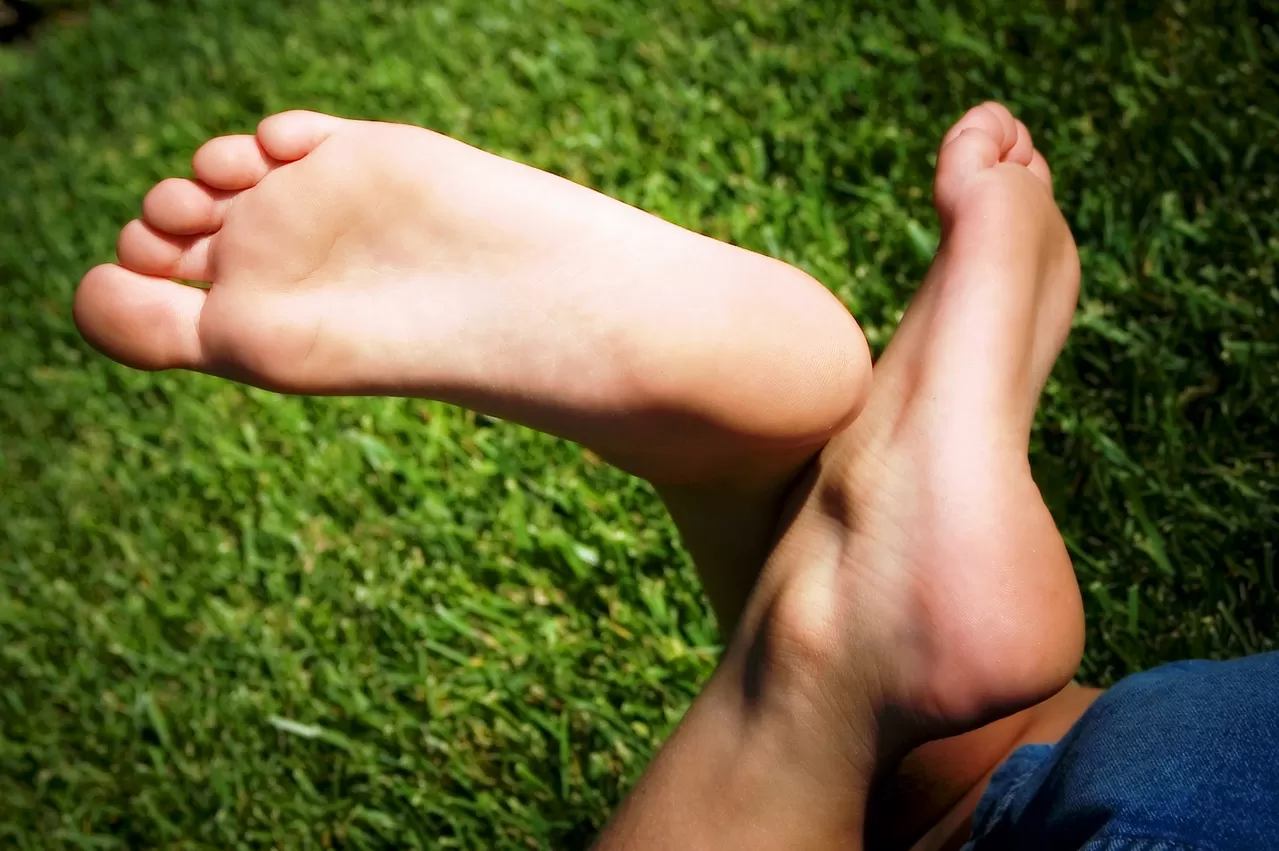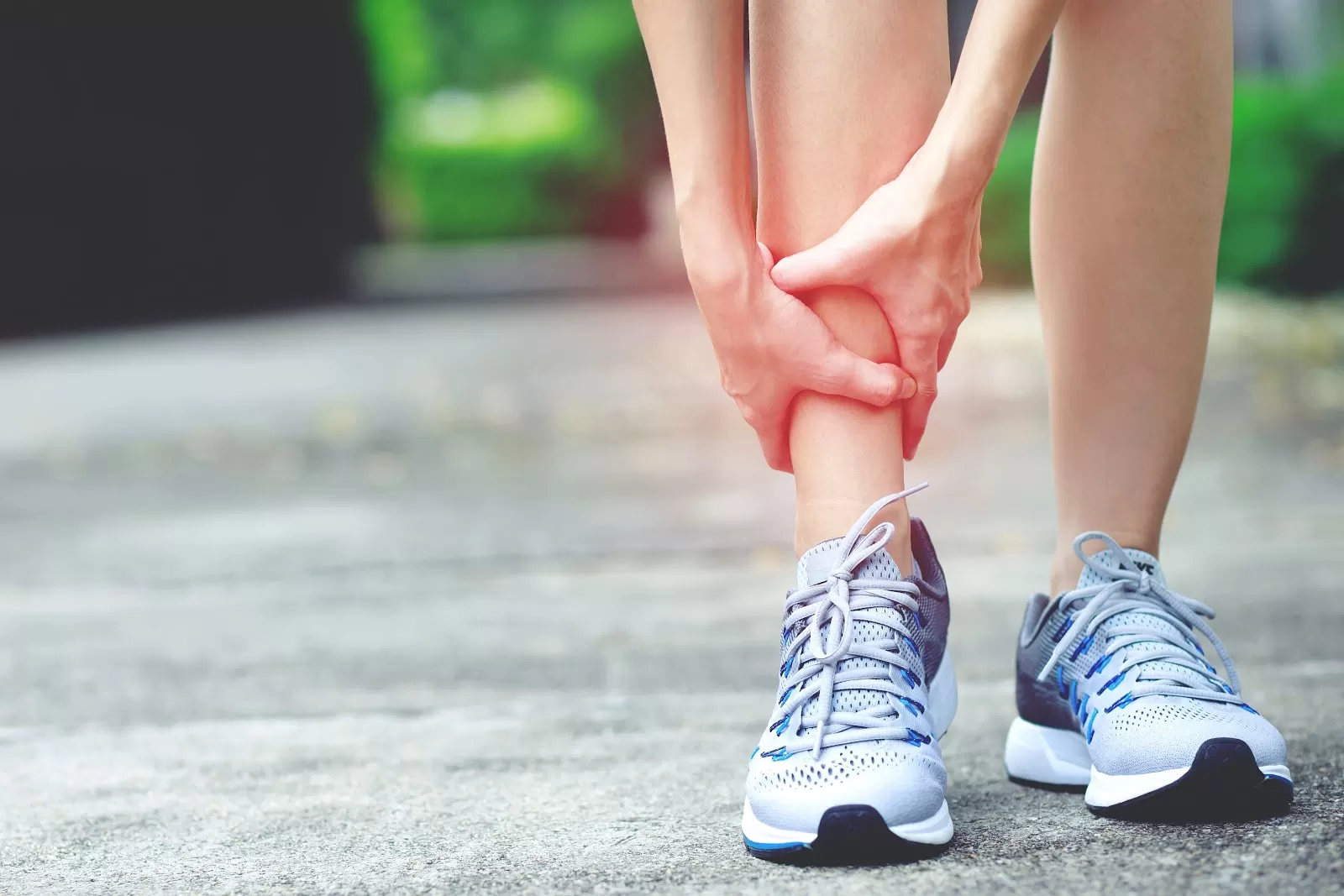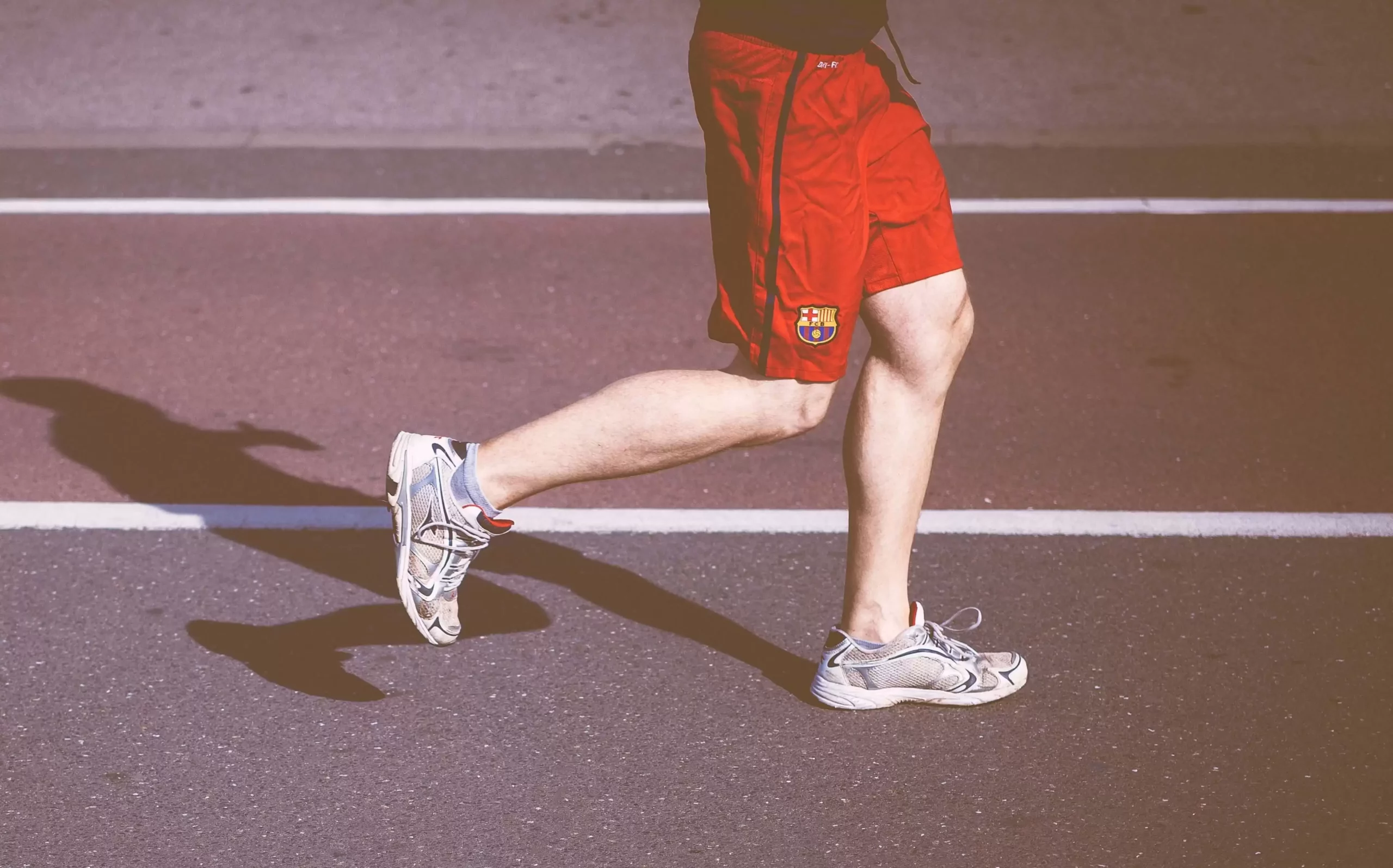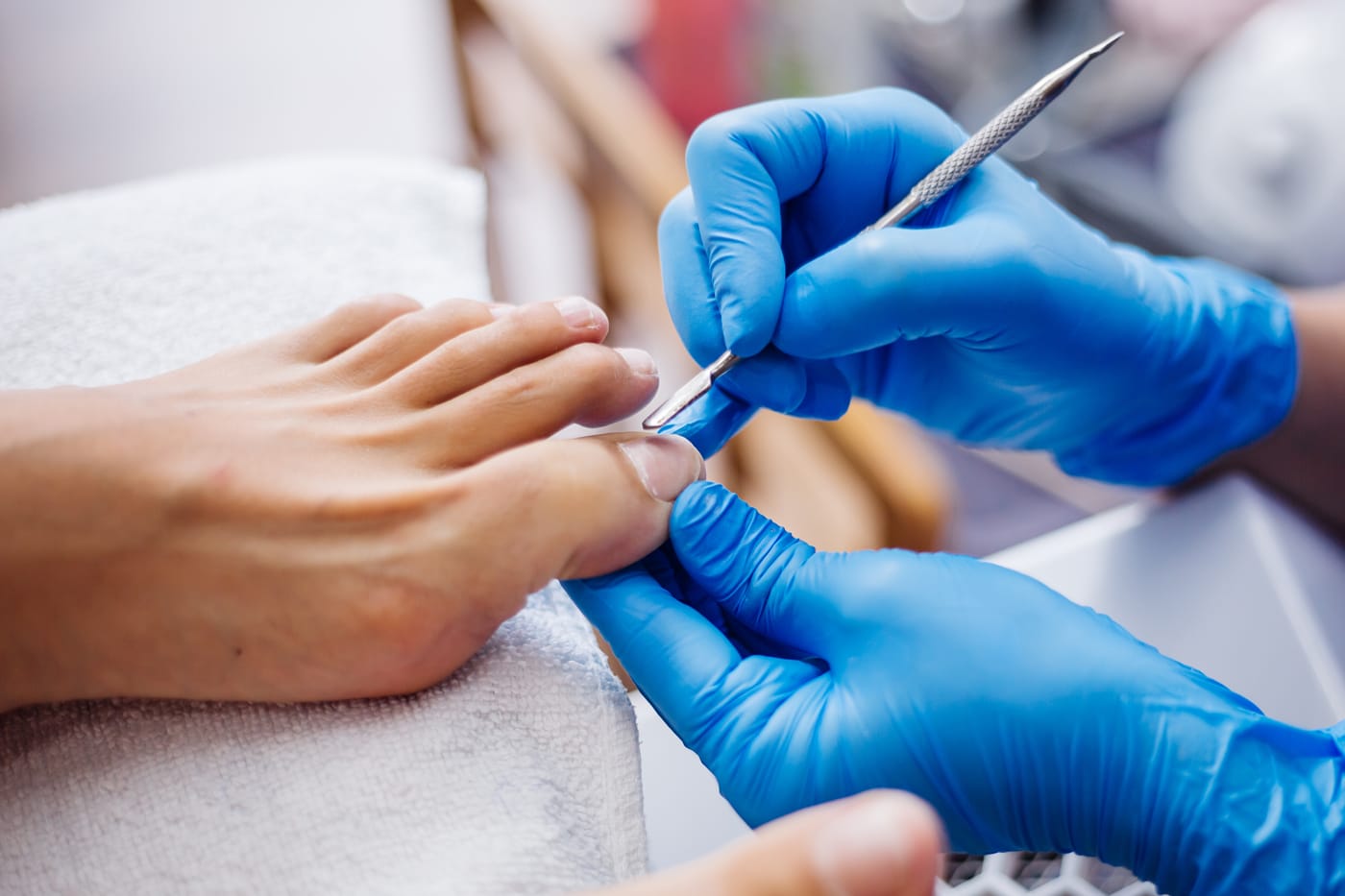Orthotics are inserts or devices worn inside footwear to provide support, correct foot abnormalities, and alleviate discomfort or pain associated with various foot conditions. They can be made from various materials like foam, rubber, plastic, or even metal, depending on the specific needs of the individual. Orthotics are often prescribed by chiropodists or other healthcare professionals to address issues such as flat feet, high arches, plantar fasciitis, bunions, arthritis, and other biomechanical imbalances in the feet and lower limbs. They can help improve alignment, distribute pressure more evenly, and enhance overall foot function, leading to reduced pain and improved mobility.
What are Custom-Made Orthotics?

What are over-the-counter Orthotics?
In contrast to custom foot orthotics, standard over-the-counter options are manufactured in bulk and available for purchase at pharmacies, grocery stores, and various retail outlets.
What are the pros and cons of Custom-Made Orthotics and Over-The-Counter Orthotics?
Custom Made Orthotics
PROS
- Tailored Fit: Custom-made orthotics are crafted specifically for the individual’s foot shape and biomechanics, ensuring optimal support and comfort.
- Targeted Correction: They can address specific foot conditions, such as
over-pronation or high arches, with precise corrections tailored to the
patient’s needs. - Enhanced Effectiveness: Custom orthotics are often more effective at relieving pain and improving foot function compared to over-the-counter options.
- Longevity: They are typically made from durable materials and can last for a longer period with proper care and maintenance.
CONS
- Cost: Custom-made orthotics can be expensive, especially in comparison to their OTC counterparts
- Time-Consuming Process: The process of obtaining custom orthotics
involves multiple appointments and measurements, which can take time. - Adjustment Period: Patients may require some time to get used to wearing
custom orthotics, and adjustments may be needed to achieve the desired
comfort and effectiveness.
Over-the-Counter Orthotics
PROS
- Accessibility: Over-the-counter orthotics are readily available at
pharmacies, retail stores, and online, making them convenient to
purchase without the need for a prescription or specialized fitting. - Affordability: They are generally more affordable than custom-made
orthotics, making them a cost-effective option for individuals on a
budget. - Immediate Use: Over-the-counter orthotics can be used right away without the need for a waiting period or multiple appointments.
CONS
- Limited Customization: Over-the-counter orthotics are not tailored to
the individual’s specific foot shape and biomechanics, which may result
in less precise support and correction. - Less Effective: They may not provide the same level of pain relief or
improvement in foot function as custom-made orthotics, especially for
more severe foot conditions. - Durability: Over-the-counter orthotics may not be as durable as custom-made ones and may need to be replaced more frequently.
- Potential Discomfort: Some over-the-counter orthotics may cause
discomfort or exacerbate existing foot issues if they do not fit
properly or provide adequate support.
Click here to book an appointment with a chiropodist at one of our eight locations.
- Physiotherapy Etobicoke – Triangle Physiotherapy Etobicoke
- Oakville Physiotherapy Clinic – Triangle Physiotherapy Oakville
- Physiotherapy North York – Triangle Physiotherapy North York
- Mississauga Physiotherapy Clinics – Triangle Physiotherapy Mississauga
- Downtown Physiotherapy Clinics – Triangle Physiotherapy King West
- Uptown Physiotherapy Clinics – Triangle Physiotherapy Lawrence Park
- Physiotherapy Clinic Downtown Toronto – Triangle Physiotherapy Queens Quay
- Physiotherapy Clinics Mississauga – Triangle Physiotherapy Erin Mills
Choosing the right orthotics, whether custom-made or over-the-counter, is crucial for foot health and comfort. For those looking to enhance their treatment with professional physiotherapy services, there are clinics in physiotherapy Etobicoke, Oakville, North York, Toronto, Lawrence Park, Queens Quay, Erin Mills, Mississauga, and Liberty Village. These locations provide expert care and customized treatment plans to help you achieve optimal foot health and overall well-being.
What is Plantar Fasciitis?
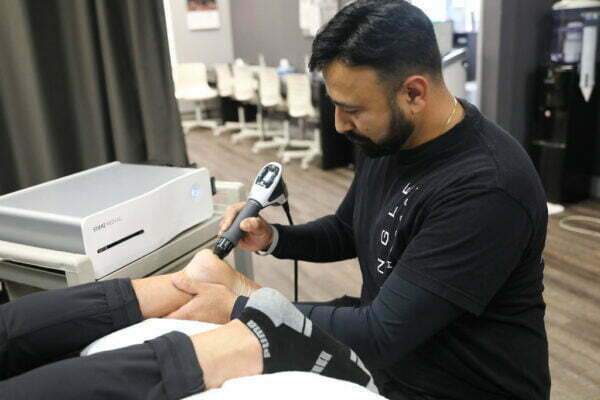
Plantar Fasciitis is a type of foot pain resulting from inflammation of a band of connective tissue located on the bottom side of the foot known as the Plantar Fascia. This band of connective tissue runs from the heel of the foot, all the way to the base of each toe, and it functions to support the arch of the foot, especially during weight-bearing.
The pain associated with Plantar Fasciitis is located on the bottom of the foot, with it often manifesting around the heel and along the inside of the foot. It is common for this pain to be at its worst first thing in the morning, and it is usually accompanied by other symptoms, such as stiffness, weakness, swelling and decreased proprioception.
What is the Plantar Fascia?
The plantar fascia is a flat band of tissue that connects your heel bone (Calcaneus) to the base of the toes (Metatarsophalangeal joints). This ligament assists in supporting the arch of your foot.
What causes Plantar Foot Pain?
People experience this when they have strained the connective tissue from repetitive overloading to the area. Repetitive overloading causes little tears to occur, and over time this produces inflammation and other associated symptoms, as described above.
Plantar Fasciitis is more common in people who can relate to the following:
- Have flat feet or high arches
- Have tight calf muscles
- Wear improper footwear
- Engage in repetitive physical activity (overtraining)
- Suddenly changed activity levels (increased frequency, duration or intensity)
- Suddenly changed activity or training environment
- Work in an environment that requires prolonged standing
Plantar Fasciitis is one of the most common reasons people experience foot pain and seek Physiotherapy treatment to solve it.
How can a physiotherapist at Triangle Physiotherapy help with plantar foot pain?
A Physiotherapist at Triangle Physiotherapy will do a thorough assessment of the fot to ensure a proper diagnosis is obtained. This will include getting a detailed history, observing the area and how you function, and running through a series of specific tests. From there, an individualized treatment plan will be made for you to help you achieve your goals and assist you on your road to recovery.
If you think you might have Plantar Foot Pain, contact us to book an appointment with one of our Physiotherapists today!
“Managing plantar foot pain effectively requires targeted physiotherapy. Triangle Physiotherapy offers expert services across the GTA, including Physiotherapy in Etobicoke, Oakville, North York, Toronto, Lawrence Park, Queens Quay, Erin Mills, Mississauga, and Liberty Village. Our experienced physiotherapists provide personalized care to help alleviate pain and improve foot function, ensuring you can get back on your feet with confidence.”
One of the most common runners’ complaints is Shin splints (also known as Medial Tibial Stress Syndrome (MTSS)). The word shin splints describes pain/discomfort that gets worse during running or exercise around the front of the lower shin. Shin splints are usually developed by overuse, and a registered physiotherapist will do a detailed assessment to diagnose shin splints and develop a treatment plan to resolve them.
Shin splints are painful and uncomfortable but here are a few tips to effectively manage them.

Woman suffering from an ankle injury while exercising. Running sport injury concept.
Rest
Shin splints are considered an overuse injury. In the short term, rest will help the pain, and it is advised to rest for a period of time before beginning to run again. Start with shorter, slower distances instead of jumping right back into long distances when you start running again. Start running once a week and work up to twice a week if you usually run 3 days a week.
Also read, Best physsiotherapy clinic in Oakville
Ice
Place ice packs on your shins for a few minutes at a time. Icing will not treat your shin splints but will help effectively manage your pain after running.
Change up your workout routine
Adding resistance training to your workout routine can help reduce your pain by helping your muscles & tendons increase their capacity. Incorporating other types of aerobic exercise into your routine, like cycling, rowing, or the elliptical in place of running, can also help. Shin splints commonly come from the impact from running on hard or uneven surfaces. Replacing running with a different type of exercise once a week can help.
Stretching, warm-ups and cool-downs
Stretch your calves and shins before running to increase the flexibility in your legs. Warm-up before your workout to prepare your muscles and cool down at the end of it to help your muscles recover.
Also read, Best Physiotherapy Clinic in Missisuaga
Footwear & Orthotics
Think about how long you have had your running shoes. Good shoes are important as they act as shock absorbers every time your foot hits the ground. If the sole of the shoe is worn, shoes lose their shock absorption. Try a new pair of shoes with more cushioning and see how you get on.
Also, consider seeing a chiropodist for a pair of orthotics. Custom orthotics can help align and stabilize your foot and ankle, taking stress off of your lower leg. They can also be beneficial if you have flat feet.
Our physiotherapists at Triangle Physiotherapy can help resolve your shin splints and get you back to running or any other sport that you may love! Call us to book your assessment or book online here.
If you’re suffering from shin splints, professional physiotherapy can help with pain management and recovery through targeted exercises and treatments. For those in need of physiotherapy services, there are reputable clinics in physiotherapy Etobicoke, Oakville, North York, Toronto, Lawrence Park, Queens Quay, Erin Mills, Mississauga, and Liberty Village. These locations offer expert care to help you recover from shin splints and get back to your daily activities pain-free.
Our feet are likely the most used body parts of all of our limbs. Be it sitting or standing, we are always using our legs in one way or the other. In fact, the use of our feet and legs usually begins the moment we wake up. So it is safe to say that our feet play a vital role in our day-to-day life and as such, it is important to take good care of them. Our feet carry the entire weight of our body throughout the day. They undergo tremendous pressure with every step we take as they get compressed and endure repeated movement against our footwear. Over a period of time, pressure on certain parts of the foot can increase and the body compensates by adding extra layers of scar tissue and skin on parts of feet that undergo high pressure, such as the ball and heel & toes of the foot. This can cause there to be painful areas of pressure on the foot or the formation of callouses on areas of higher pressure on the foot.
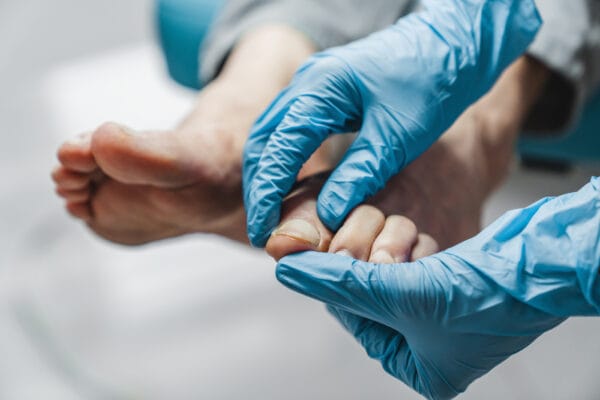
Also read, Best Physiotherapy Clinic in Etobicoke
Why schedule an appointment with a Chiropodist?
Walking, running, sitting – everything involves your legs. A minor injury or pain can cause huge discomfort in your everyday life and can escalate to become a serious issue. For example, an ingrown toenail or an infection can be very painful and uncomfortable. Seeing a Chiropodist at an earlier stage will help immensely in preventing and managing these kinds of foot-related problems.
An appointment with a Chiropodist will involve a thorough assessment of your foot-related problem and treatment that will help alleviate the problem. Even without a significant ongoing foot issue, a visit to the Chiropodist can help you in preventing one from developing by gaining more insight into your walking pattern or providing education on correct foot care. They are trained to diagnose and treat a wide variety of foot-related conditions and are able to understand their patient’s needs in order to prevent and treat both acute and chronic conditions that involve the foot and lower limb functions.
Also read, Best Physiotherapy Clinic in Oakville
What do we treat at Triangle Physiotherapy?
Our Chiropodist is a highly skilled professional that is an expert in their field. At Triangle Physiotherapy, our registered Chiropodists diagnose, assess, and treat a wide range of foot-related health issues and abnormalities including but not limited to:
- Alignment and support to prevent or correct abnormalities in the lower limbs
- Abnormal gait patterns
- Foot pain
- Sports injuries
- Diabetic foot care
Also read, Best Physiotherapy Treatment in Mississauga
How to Contact Triangle Physiotherapy?
We have 8 clinics located across the GTA: Etobicoke, Oakville, Mississauga, North York, and Toronto (King Street West, Queens Quay, and Yonge Street. If you have any questions regarding what type of chiropody treatment may be appropriate for you, please call or email us and we will be happy to answer your questions. You can also Book an Appointment with a Chiropodist now.
Chiropodists play a vital role in managing foot and lower limb conditions, often collaborating with physiotherapists to provide comprehensive care. If you’re looking for professional physiotherapy services to complement chiropody care, consider clinics in physiotherapy Etobicoke, Oakville, North York, Toronto, Lawrence Park, Queens Quay, Erin Mills, Mississauga, and Liberty Village. These locations offer expert care and personalized treatment plans to help you achieve optimal foot health.
Who is a Podiatrist? A podiatrist deals with the assessment, diagnosis and treatment of the lower limbs and feet. What is a Chiropodist? A chiropodist deals with the assessment, diagnosis and treatment of the lower limbs and feet. Sound familiar? That is because these two professions are one and the same!
While there may be differences in terms of scope of practice in other areas of the world, in Canada, both podiatrists and chiropodists are qualified to treat patients with arthritis, diabetes, lower limb sports injuries, and various other ailments of the feet. They have received specialized training which allows them to work with patients of all ages and to help the elderly stay mobile and independent. The only practical difference between the two professions, in terms of their scope of practice in Canada, is simply their title.
Also read, Physiotherapy Treatment Etobicoke
Chiropodists can advise patients on how to look after their feet and what type of shoes or orthotics to wear. They can also treat, alleviate and benefit day-to-day foot conditions, such as:
- Thickened, fungal, or ingrown toenails
- Varicose veins
- Athlete’s foot
- Smelly feet
- Dry and cracked heels
- Flat feet
- Bunions
- Heel pain
- Ageing feet
- Blisters
- Gout
- Sports Injuries
Also read, Oakville Physiotherapy Rehab Clinic

Seek help from a Chiropodist for advice or treatment if you have:
- Painful heels or arches
- Thickened or discoloured toenails
- Cracks, cuts, or hardened skin on your feet
- Growths, such as warts
- Scaling or peeling on the soles
- Any other foot condition
Don’t bury your head in the sand and ignore small foot problems! These small “problems” can quickly transform into major issues that can affect the quality of your life. As they say, “Prevention is the best cure“. Patients who make regular check-up appointments can avoid many potential foot problems as Chiropodists are specialists at recognizing problems before they have occurred.
Don’t let your feet problems keep you from stepping into our clinic! Seek the help of our foot specialists at any of our locations in Etobicoke, Oakville, North York, Mississauga & Toronto, and say goodbye to your foot dilemmas!
Addressing foot problems effectively often requires a comprehensive approach that includes professional physiotherapy. If you need expert care for foot-related issues, there are clinics in physiotherapy Etobicoke, Oakville, North York, Toronto, Lawrence Park, Queens Quay, Erin Mills, Mississauga, and Liberty Village. These locations provide specialized physiotherapy services and personalized treatment plans to help you get back on your feet and improve your overall mobility.

